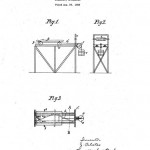Old Dog – New Trick: Pilates equipment – A Brief Historical Overview
by Kevin Bowen
Apr 13, 2015
As we all know throughout the years Pilates equipment has evolved and changed – some in the profession feel that this is for the best and others feel that the original design and dimensions are the ‘correct’ way to produce and design equipment and to exercise the Pilates way. I did some research last year on Pilates equipment for a presentation that I gave at the PMA Conference. My initial premise was that many instructors don’t even understand the ‘basic’ mechanics of the equipment, which would include the angles and lines of force on the body and those effects on the ‘mechanics’ of the exercises. This research yielded some interesting facts about the history and the changes.
In my opinion it is a stretch to call our ‘modern’ day equipment Pilates equipment – to me the ‘real deal’ would be equipment that Joe himself made or that he commissioned to be made, and since Joe is deceased and our modern day equipment is actually exercise equipment which is utilized in Pilates.
Equipment
The original patent on (which piece of equipment, perhaps a short description?) (This piece was similar to a Reformer) equipment stated ‘Gymnastic Apparatus’ – and this patent was on the legs – no straps, further the original design was actually with a weight stack and did NOT include springs. The pondering question for me here is why would he design equipment without springs since they are/were so important? Joe never actually produced this piece of equipment with the weight stack. What’s even more interesting to note is that a patent on the Reformer never existed – the patents were actually on the Wunda Chair, Foot Corrector and Bednasium.
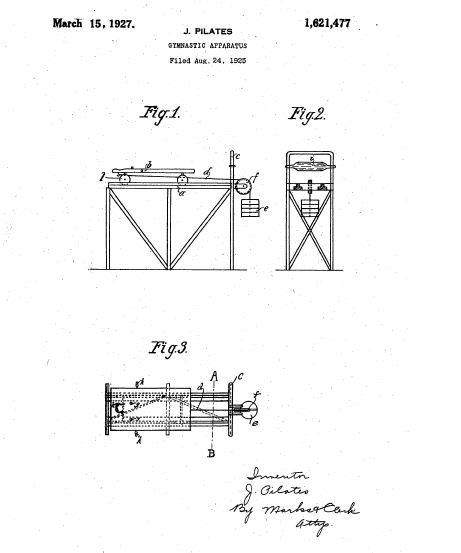
Up until the time of Joe’s equipment designs, the ‘Basic’ piece of equipment popular in (this change is fine) exercise was the ‘rowing’ machine. So Joe, in his brilliance changed exercise equipment by putting people supine, prone and on their side, instead of just seated.
According to my sources – Gratz started producing Pilates equipment at the request of Romana Kryzanowska, not of Joe Pilates. At that time – Romana had one of every piece of equipment and used those pieces as a base design for manufacturing. Romana requested some changes to be made to the equipment that she deemed necessary – such as softening the square and sharp edges of the Reformer.
Interesting side note — one way to determine an ‘original’ piece of Pilates equipment was if the wood handles were made from toilet paper roll holders.
Another change that Romana made was that the ladder on the barrel should be fixed and not adjustable. Romana apparently felt that 80-inches was the perfect length for the Reformer, as this was her specific request. Joes’s original designs contained fixed length, non-adjustable straps – adjustable straps/ropes are a modern innovation/evolution.
Another interesting note — Kathy Grant’s Reformer and Eve Gentry’s Reformers (original pieces) have different measurements, differing by 1 – 1-½ inches in length and width. Both have edges that are hard, not soft or rounded. Thus a question – what really are the ‘correct dimensions’ for the equipment? I find that extending the equipment by 6 inches does NOT impact the feel of the exercises and provides a more effective use by taller people.
Springs
Springs have changed throughout the years – originally the equipment had 4 springs all of the same resistance. Today Reformers can have 5 and 6 springs of varying of resistance. Springs vary greatly – when a spring is manufactured, the acceptable manufacturing tolerance is +/- 10%. What this means to us is that one batch/order of springs may be produced at +8% of the given resistance, while and the next batch/order may be -8%. Both are labeled with equivalent resistance and meet manufacturing standard, while in fact the difference can vary greatly.
Changes
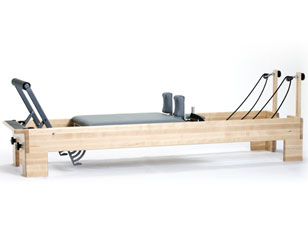
Balanced Body started making equipment at the request of Ron Fletcher and an original Balanced Body piece was 80 inches, had 4 springs and had 4 gears (one of which was loaded and the other were not). In time, teachers requested changes – one being the addition of a 5th spring – which was lighter. This suggestion was made by a now deceased teacher named Stefan Frease – and was originally added to make the exercises more difficult by requiring more ‘control’ during the execution of the exercises. Another innovation Stefan added was to use colored yarn to differentiate the spring weight – the precursor to the colored tabs of today.
Another interesting fact to note here is that Kathy Grant’s Reformer actually had ropes – and the ropes were added so that there was more adjustability based upon the gear that was used for an exercise. Balanced Body decided to add this change as an option in their equipment.
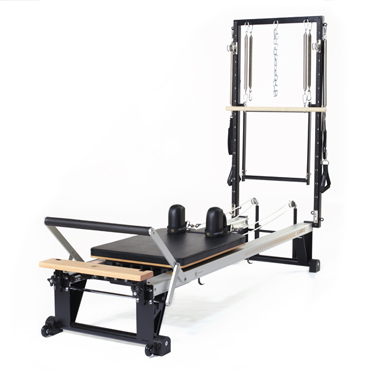
The ‘risers’ on the back of the reformer where the pulley came into being in the 80’s as it was noted that during leg circles the ropes/straps could be caught on the shoulder blocks. Also, as Pilates equipment started to be utilized in Physical Therapy settings, the Reformers were made ‘higher’ to allow ease of accessibility for the patients.
Other companies, such as STOTT Pilates and Peak Pilates, contributed to equipment evolution. STOTT’s original equipment was mad of wood, changing to metal and adding a 5th lighter spring. They also added an adjustable pulley on the back, and a riser system that added a second pulley located closer to the top of their Reformer/Tower unit. Peak Pilates added a Tower to their Reformer so that it could double as a Cadillac/Trap Table for those that have limited space for equipment.
The evolution of the equipment through the years have created a dynamic, evolving system of exercise that was originally created by Joseph H. Plates. One thing I stress to all Pilates professionals – know your roots. The original exercises were created on the historic equipment and therefore they have a different ‘feel’ – and in my opinion are actually different exercises than the exercises that we may now do on evolved equipment – one is not necessarily better than the other. For example the short spine performed on a 80 inch Reformer with 4 equivalent springs and leather straps is a very different exercise than the short spine done on a 5 varying resistance spring Reformer with the pulleys adjusted up to the top of the risers.
I advocate that Pilates professionals take time to learn about equipment evolution, and how these changes affects the exercises. I encourage students to try the exercises on different types of equipment, especially comparing exercises performed on more historically accurate equipment vs. on modern equipment – the experience can be very enriching.
Compiled from interview information from:
Ken Endelman, Basil Belcher, Lindsay Merrithew. Julie Lobdell, Stacey Redfield.
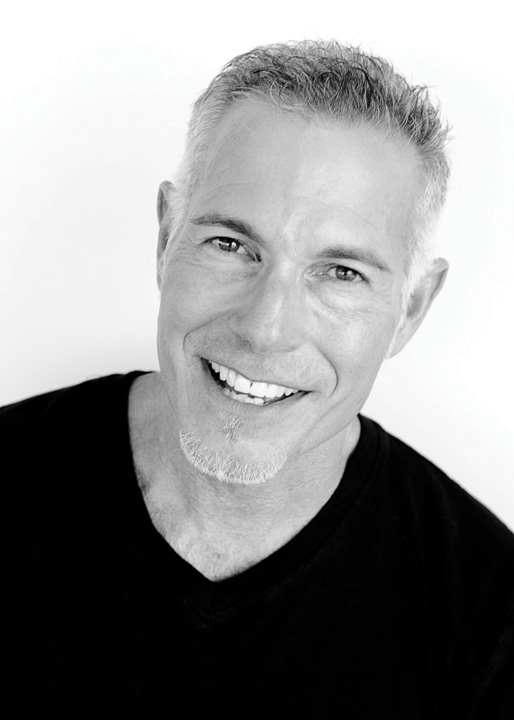 Kevin A. Bowen has been involved in the Pilates profession for 20 years. He took over Core Dynamics Pilates from Michele Larsson and is now the owner and Director. He was the Co-founder, past President and former Executive Director of the Pilates Method Alliance (PMA), and the former Director of Education for Peak Pilates, he founded, owned and operated the Pilates Miami studio in Miami FL for more than 13 years. Kevin worked with Pilates first generation Master Instructor Lolita San Miguel as she launched her Lolita’s Legacy Teacher Training Program.
Kevin A. Bowen has been involved in the Pilates profession for 20 years. He took over Core Dynamics Pilates from Michele Larsson and is now the owner and Director. He was the Co-founder, past President and former Executive Director of the Pilates Method Alliance (PMA), and the former Director of Education for Peak Pilates, he founded, owned and operated the Pilates Miami studio in Miami FL for more than 13 years. Kevin worked with Pilates first generation Master Instructor Lolita San Miguel as she launched her Lolita’s Legacy Teacher Training Program.
Kevin has been actively involved in the Fitness and Wellness community as a progressive leader for more than 25 years. He has been featured on numerous local television and newspaper features around the US in addition to national features on CNN and the Discovery Channel, and is a regular contributor to Pilates Style Magazine.

